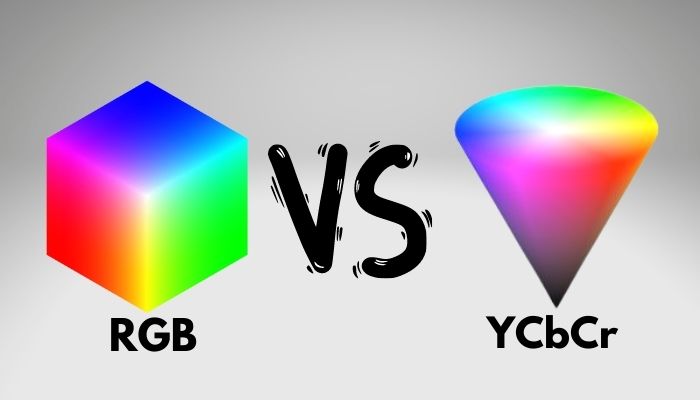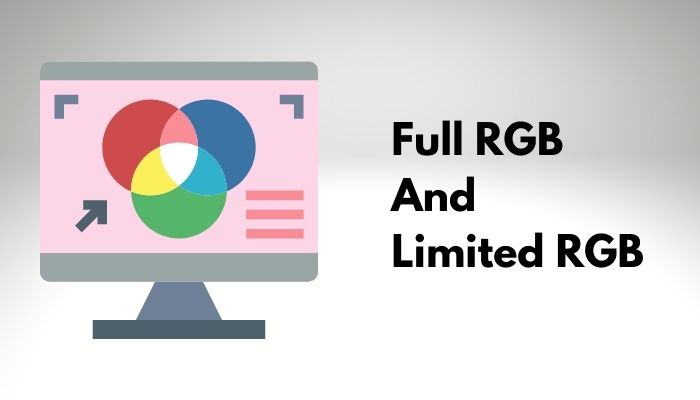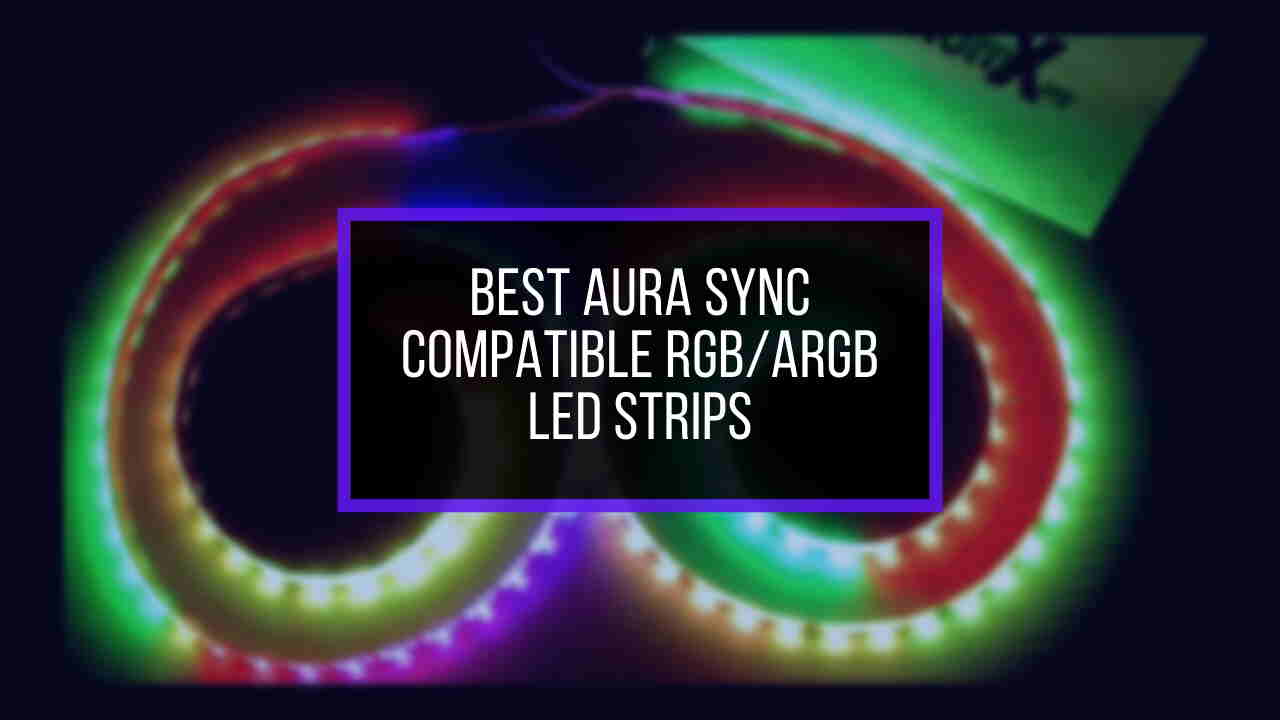RGB and YCbCr are two different types of color spaces that are used for displaying video and images. Nowadays, RGB is more common compared to YCbCr.

RGB literally stands for red, green and blue. In RGB, the combination of these 3 colors are used to display a color image/video.s. In RGB, each pixel can hold 3 colors, so more storage is required to store a colored image than an uncolored image.
YCbCr also known as YUV, where Y stands for Luma and luminance, U stands for blue-luminance, and V stands for red-luminance, which is another color system used mainly because it can separate luminance from chrominance more effectively than RGB color space.
Taking all this information might seem challenging at first, but after conducting thorough research, I have brought you the information that describes the differences between RGB and YCbCr. Read the full article to have a clear understanding of RGB and YCbCr color spaces.
What is RGB?
Colors are represented in numbers when they are being used in digital media. Hence, color space is a set of rules that allows describing colors with numbers. RGB is a color space. RGB stands for red, green, and blue and it is the system of displaying images/videos where each pixel on a screen can display three colors.
The combination of these three colors in the pixels results in the colored image that you can see in your display. RGB is the most common type of color space used in displays, and it is, therefore, essential to know about RGB. In the RGB color space, the brightness and color information is processed at the same time.
Full RGB and limited RGB

Initially, RGB was developed by well-renowned companies like Microsoft, HP and Intel. While using a LED monitor, the question of using limited RGB or full RGB is an important one as it can change the quality of the image. The core difference between limited RGB and full RGB is that they have different ranges of light and dark intensity.
There is no direct relation to bit color depth, so HDR works fine with both. Each product that supports RGB will have its own range of limited and full RGB range as each product will have a different range of peak brightness. This individual nature of RGB makes monitor and TV calibration very important. The factors mentioned above apply to sRGB(standard RGB) and RGB.
The scale of the RGB color system consists of 255 levels where 0 means absolute black and 255 means absolute white. On the scale, 1 – 254 is the other colors we get from the different combinations of red, blue and green. There are other scales as well, like CAD/CAM, which has a scale of 0-147, but we will not discuss that as they are not mainstream and are used for more niche purposes.
Just as the name suggests, full RGB is capable of showing all the colors on the scale of 0-255, and this is being used and has been used for many years in PC monitors. Limited RGB has a range of 16-235. The absolute black in limited RGB is 16 levels brighter than full RGB. Also, the absolute white is 15 levels lower compared to full RGB.
Also, don’t forget to check out best RGB CPU coolers.
Why is limited RGB used?
Full RGB has a greater range of colors and is used in most of the displays that can be purchased nowadays. So, why is limited RGB even needed? This is a good question indeed, and I am here to tell you why.
Content creators like cinematographers and directors observed that the default full RGB color space has some flaws. You see, when making movies, especially horror movies, it is harder to hide things in full RGB as full RGB has a larger darkness range for which it can show more details in dark areas of an image.
Movies that have a lot of CGI suffer from full RGB as well as the CGI elements look less realistic and overly exposed. In action movies, wires which need to be hidden are used for stunts, and various other things are required to be hidden as well. Having limited RGB makes it easier for the editors to hide and remove things in post-production.
For the reasons mentioned above, limited RGB is being used in most cinematic and creative arts applications.
Check out our expert’s recommended best RGB Hub and fan splitter cable for your ultimate rig.
Issues with limited and full RGB
Most PC monitors on the market run at full RGB by default. So, if you force your Full RGB monitor to run limited RGB sources, you will notice that the dark areas in the image are not that detailed and appear to be too dark. This can be a hassle when doing tasks like watching movies or editing videos.
So to fix this problem, you should switch to limited RGB on your monitor or display of choice if it is supported. Most streaming services like Netflix can auto adjust according to the user’s display. Sadly, Blu-rays are hardcoded to limited RGB and looks terrible on a full RGB display.
On the other hand, if you force your limited RGB display to show full RGB sources, you can notice that the image will be washed out, meaning the dark areas of the image will be lighter, and there will be a loss in image detail in the darker areas.
How to properly use limited and full RGB
Thankfully, it is very easy to fix issues regarding the use of limited and full RGB. You have to make sure your display and the sources match. If you are gaming or doing regular tasks, make sure your display can run full RGB. Remember to set to the same dynamic range because any mismatch will result in a loss of image quality.
If you are watching a movie in Blu-ray format, make sure your display supports limited RGB to get the optimal experience.
Of course, it would be ideal if everything was more standardized, but we still did not get to that level. It would be optimal if all displays could support an auto-switching feature between full RGB and limited RGB depending on the content that was being displayed.
As that is not the case, the only thing you can do is check whether your display RGB level has the same RGB level as the image you want to see.
Also, Check out our expert-recommended best low-profile cpu cooler for your chassis.
What is YCbCr?
Although RGB is very good for displaying colored images/videos, it is not always ideal for the storage or processing of images/videos.
YCbCr is just like RGB, it is a color space. In YCbCr, the Y is the luma component of the color, and it is responsible for the light intensity of the color. Naturally, the human eye is very sensitive to this component.
Cb is the blue component related to the chroma component. This means CB is the blue component related to the green component. Cr is the red component related to the chroma component, which means it is the red component related to the green component. These components are less sensitive to the human eyes.
The y component has to be more correct as it is more sensitive to the human eye compared to the Cb and Cr components. During JPEG compression, the YCbCr color space allows the computer to use these sensitivities to the eye to eliminate any unnecessary details.
YCbCr is good for compressing images and for video-like images for which takes less data is required and storage space can be saved.
Is YCbCr better than RGB
YCbCr is better than RGB for storing image/ image type video files as it takes lesser storage, but the image quality remains almost the same.
RGB is commonly used for gaming and regular computing tasks, whereas YCbCr is mainly used to compress image files to save space which can be done by separating the Y, Cb, and Cr components. One is better than the other and vice versa depending on what you want to do.
As mentioned above, in the Full RGB and limited RGB section, full RGB is good for things like gaming and regular tasks whereas limited RGB is good for things like content creation and watching movies on Blu-ray.
Also, check out our separate post on RGB fusion not working.
FAQ
1. Is YCbCr a color space?
Yes, just like RGB YCbCr is a color space.
2. What is RGB in gaming?
RGB in gaming usually means going for a neon aesthetic containing the primary red, green and blue colors, and their combinations. The Aesthetic can range from your room to your gaming setup.
3. Is RGB better than YCbCr?
RGB is better for common computing tasks, and YCbCr is better for watching movies.
Conclusion
The concepts of RGB and YCbCr might seem a lot to handle at first. IF you have read the full article, you should have a clear understanding of the RGB and YCbCr color spaces. Hopefully, you have a better understanding of the RGB and YCbCr color spaces, and now you can apply the things you have learned from this article in the future.





i relaly liked the article and understood a lot,thank you for that.
I tested both rgb limited and full vs ycbcr 444 mainly,to tell you the truth i ididnt noticed any difference between rgb full & ycbcr 444,colours were the same,black was black on both situations etc etc.
Only difference were on rgb itself,limited vs full. limited colours were washed out a lot,full were perfect with deep colours and deep black.
Tested on a sony tv x950g 65” connected to pc with hdmi 2.0 ultra speed 3840×2160 resolution with nvidia gtx 1080ti gpu. Conclusion…. at least for me,rgb full and ycbcr 444 are equal on quality.
I ended up with rgb full as i gaming too and noticed colors were better on rgb.